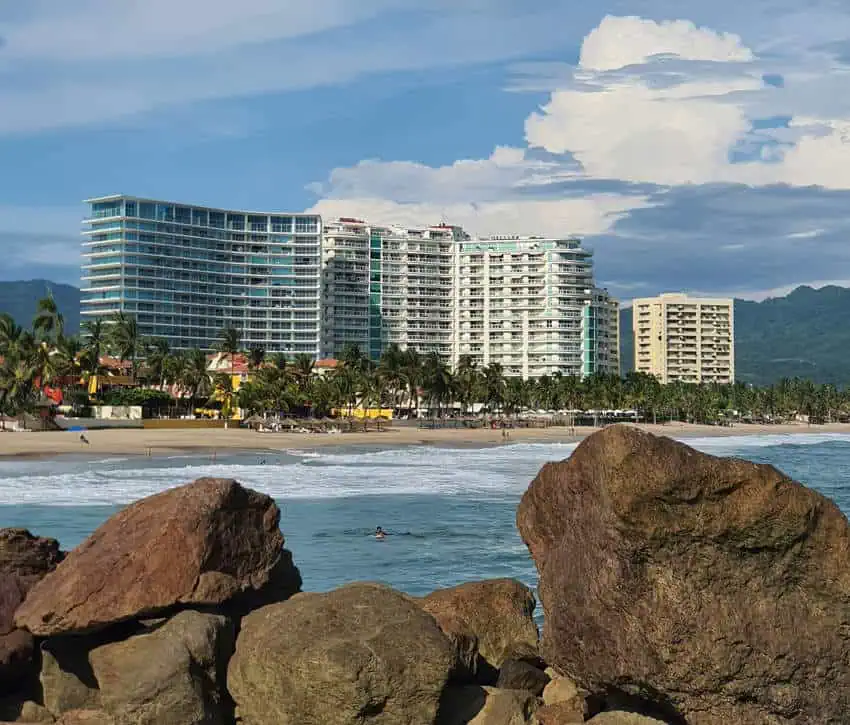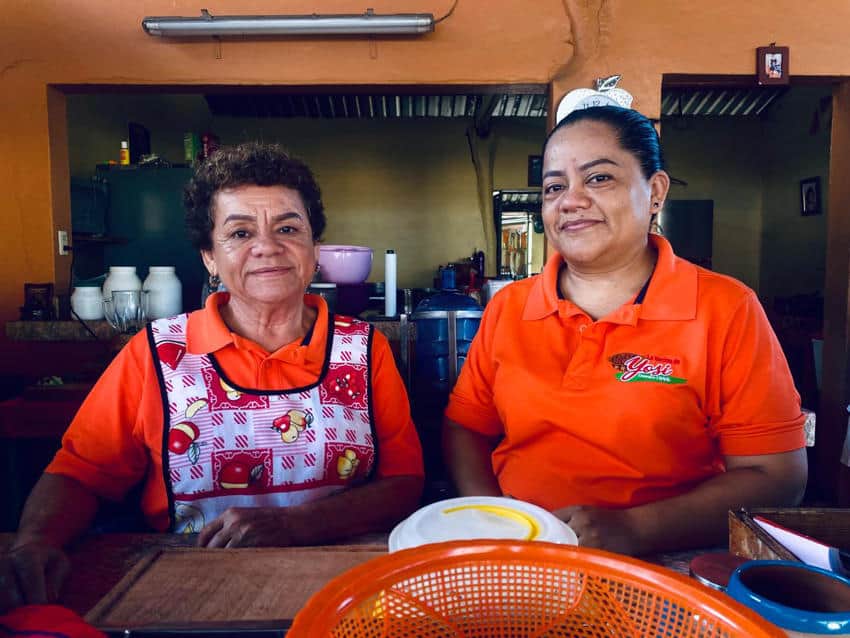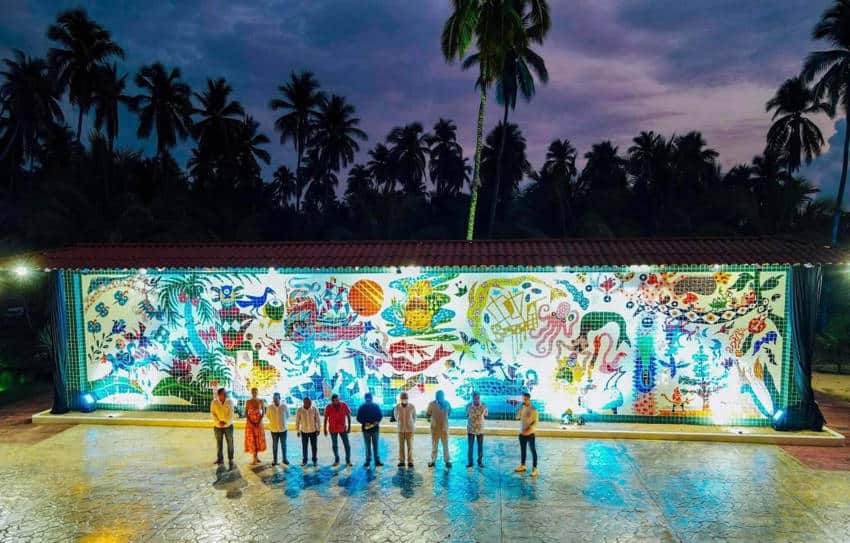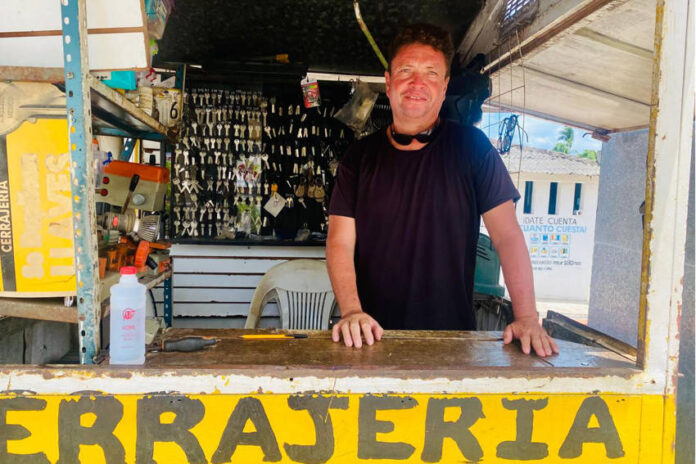When I first arrived in Mexico over 31 years ago, I was immediately smitten with Zihuatanejo and felt drawn to find a way to live and work there on either a part-time or full-time basis. Somehow, my dream of Mexican life was realized, and I divided my time between Mexico and Canada almost equally.
After renting for many years in various parts of both Ixtapa and Zihuatanejo, I decided three years ago to build a home on some property I had purchased years earlier, just 15 minutes south of Zihuatanejo in the small Mexican town of El Coacoyul (population 6,900 people). El Coacoyul, formerly known as Hacienda El Coacoyul, is named after an exotic plant popular in the town. The name is Indigenous and means “navel of the world.”

El Coacoyul has beautiful murals that appear unexpectedly on hidden streets and walkways. Although a little faded from when various artists first painted them a couple of years ago, they showcase the amazing talent in the area, and I enjoy exploring the side streets in search of them.
The town has experienced rapid growth, thanks in part to the Ixtapa-Zihuatanejo International Airport and to its proximity to the city of Zihuatanejo and surrounding tourist areas. Large acres of coconut groves in the town rapidly made way for the current building sites of today.
However, El Coacoyul still has a small-town feel, and I appreciate the rural setting and privacy it provides while still being close enough to amenities. When choosing where to live in Mexico, most people feel more comfortable moving to a larger city rather than a small town. For one thing, the social aspect is better, and they are often surrounded by other expats, which can be comforting for some.
I understand that. At first, the major adjustment I had to make was being unable to step out of my door and walk to my regular Zihuatanejo haunts. The other adjustment was that I knew very few people in El Coacoyul, and at night, especially, it can get a bit lonely without friends nearby.
However, I now enjoy being one of the few foreigners in the community. It forces me to be outgoing and to talk to strangers that I might normally pass by. It’s rewarding when locals stop and say hello. I grew up in a small town in Canada, and knowing everyone was what made it special.
Being here reminds me of home, and I find a similar sense of acceptance that I appreciate in small communities. And when I need a more social life, I know I can always drive to nearby Zihuatanejo. What has been interesting to me is that the more I become accustomed to peace, quiet and solitude, the more I like it.

My move did involve other adjustments: At first, I still found myself driving to Zihuatanejo for most of my supplies. However, I have since discovered that anything I need is just a stone’s throw away from where I live. And so, as the song goes, here are just a few of my favorite things and the reason I am so happy in my new home.
Down the street, I buy fresh chicken at a place called Pollería Luz, where the owner, always friendly, sells the best fresh, plump chicken in his small, immaculate shop. If I haven’t been there in a while, he notices my absence and asks if everything is all right with me. Along the same street is the wonderful cake shop that has caught my attention. Since I am not a fan of the more commonly sold tres leches cake, I was thrilled to know they sell authentic chocolate cake.
I am now such a frequent customer that as soon as I pull up on my scooter, they ask, “Chocolate?”
Heading back to the main road, there is my favourite fruit and vegetable stand. It’s always a relief not to fight traffic like when I’m trying to find that elusive parking spot in downtown Zihuatanejo. Here, Julio sells a wide variety of fresh produce at reasonable prices, and he’ll sometimes toss in an apple or an orange as a bonus, which never fails to put a smile on my face. Hector the locksmith has bailed me out more than once when my locks mysteriously stop working. He not only makes house calls but also speaks English.
At Carnitas Quirego, my favourite taco stand, I’m conspicuous among the locals, who smile back when I greet them, somewhat surprised I speak Spanish, but it’s a great ice-breaker. Coacoyul boasts a large sports area, and I often see events held there in the evenings as I’m driving home. I keep promising myself I’ll muster the courage to stop and mingle, but so far, I’ve been too shy to do it. But I can see the opportunities for connecting with others there.
I also visit the Museo del Coco (The Coconut Museum), which is a short three blocks from the highway heading south on a paved road, for two reasons: One, they have a great restaurant and host fun-filled events and exhibitions regularly. Not only can I buy all things coco in the gift shop, such as mezcal, soap and oil but I also can take in a special exhibit, like the one that just happened to feature snakes, reptiles and insects. The second reason — if you will pardon the blatant self-promotion — is that it is home to The Seahorse Sanctuary & Equine Therapy Centre, a nonprofit organization I founded three years ago that helps kids and adults with disabilities through our horse program.

It’s not easy to integrate into any community, regardless of the country in which you live. It’s a challenge to make new friends while also embracing a different mindset. For example, people here tend to be generally more relaxed. However, I find that I prefer the slower pace, especially when I drive on the quieter side streets.
I watch older adults, who have most likely known each other their whole lives, stop and chat on the streets while sweeping the sidewalks clean. Gaggles of children walk to and from school, and although this happens in larger centers too, there is something so “Norman Rockwell” about the sight — a reminder of days gone by. Dogs roam the streets, sometimes lazily sleeping in the middle of the road. Sometimes, I’ve had to honk my horn, but more often than not, I’ve had to go around. It never fails to amuse me.
I’m calmer living here. I don’t get as triggered by little things as I used to. I find myself more at peace than I have ever been in my entire life. And that’s a good thing.
The writer divides her time between Canada and Zihuatanejo.
